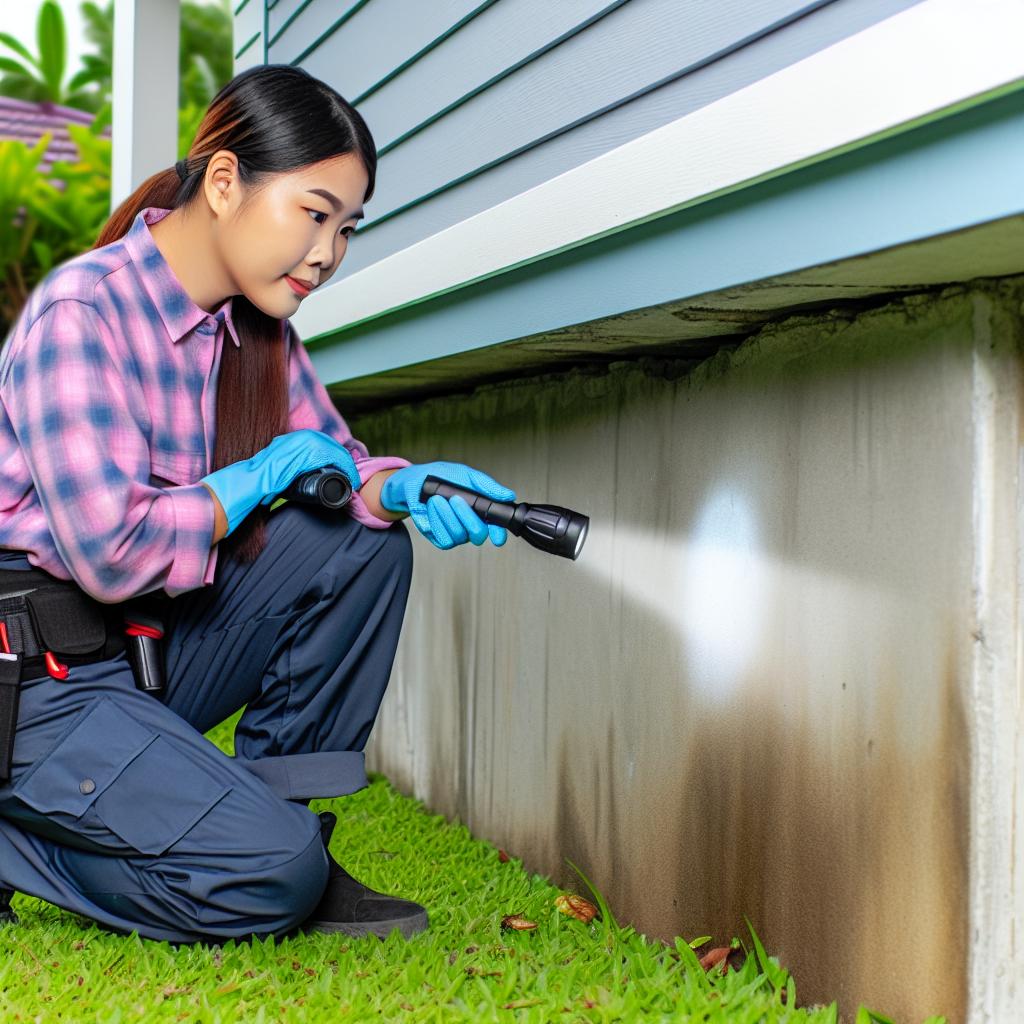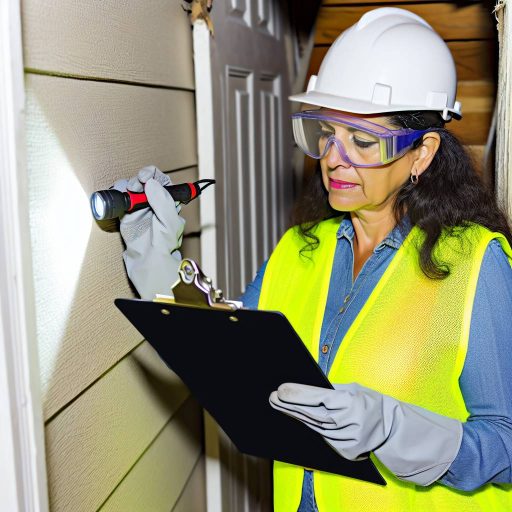Introduction to Home Inspections and Importance of Foundation Checks
Home inspections play a crucial role in real estate transactions.
They help identify potential problems before buying a property.
A critical area of focus during these inspections is the foundation.
The foundation supports the entire structure of a home.
Foundation issues can lead to serious structural problems over time.
Consequently, homeowners should prioritize foundation checks.
Early detection of foundation issues can save significant repair costs.
Additionally, it contributes to a safe living environment.
Home inspectors use various methods to evaluate the foundation.
They look for structural integrity and signs of settlement.
Vigilance during home inspections can ensure long-lasting stability.
Also, it promotes peace of mind regarding safety and home value.
Understanding foundation checks is essential for homeowners.
This understanding aids in making informed decisions in real estate.
Common Signs of Foundation Problems During Home Inspections
Cracks in Walls and Ceilings
Cracks in walls may indicate foundation issues.
Notice horizontal cracks, as they are often more serious.
Vertical cracks can also signal problems but are less alarming.
Pay attention to cracks that grow over time.
Doors and Windows Not Closing Properly
Doors and windows may fail to close or stick.
This can happen due to shifting foundation levels.
Test entry doors and windows during your inspection.
If they stick or don’t align properly, investigate further.
Uneven Floors
Uneven floors can be a clear indicator of foundation problems.
Walk around the home to check for sloping or sagging areas.
Use a marble or small ball to test floor pitch.
If it rolls to one side, further evaluation is needed.
Moisture Issues in the Basement or Crawlspace
Excess moisture can signal serious foundation issues.
Check for water stains or mold growth in these areas.
Look for signs of drainage problems around your foundation.
Water pooling outside can lead to long-term damage.
Exterior Issues
Inspect the outside of the house for signs of distress.
Look for gaps between bricks or siding and the foundation.
Stair-step cracks in brickwork indicate movement.
Pay attention to any bulging or leaning walls.
Neighboring Properties
Observe neighboring properties for foundation signs.
If nearby homes show similar issues, investigate soil conditions.
Common soil problems often affect multiple properties.
Consult with neighbors to gather information about past issues.
Tools and Equipment Needed for Foundation Inspections
Essential Tools
Having the right tools is crucial for effective foundation inspections.
A level helps determine if floors are uneven.
Use a tape measure to check for crack widths and distances.
A flashlight allows you to inspect dark areas under the foundation.
Consider a camera for documenting any issues you find.
Advanced Equipment
Some inspections require more advanced equipment.
A moisture meter detects water levels in walls and floors.
Thermal imaging cameras spot hidden moisture and insulation issues.
Soil probes help assess the soil conditions around the foundation.
Basic Safety Equipment
Ensure your safety while conducting foundation inspections.
Wear gloves to protect your hands from sharp objects.
Safety goggles can shield your eyes from dust and debris.
A hard hat may be necessary if you’re working in areas with low ceilings.
Documentation Tools
Documentation is key to tracking foundation issues.
Bring a notebook to take notes during the inspection.
A checklist helps ensure you cover all critical areas.
Consider using a mobile app for better organization of findings.
Learn More: Home Inspection Checklist For Evaluating Plumbing Systems In Homes
Exterior Inspection: Checking for Cracks and Settling
Signs of Cracks
Inspect the exterior walls for visible cracks.
Small hairline cracks may not be a concern.
However, larger cracks indicate potential foundation problems.
Pay attention to cracks that are wider than a quarter inch.
Vertical cracks can suggest settling issues.
Horizontal cracks often signal serious structural problems.
Assessing Settling
Look for unevenness in the ground around your home.
Shifts in soil can affect the foundation’s stability.
Check if doors and windows close properly.
If they stick, uneven settling may be to blame.
Furthermore, inspect for gaps between door frames and walls.
Documenting Observations
Take photos of any cracks or irregularities.
Notes on their size and location provide useful information.
This data can help professionals assess the situation better.
Regular inspections help identify foundation issues early.
Careful observation is crucial.
When to Call a Professional
If you notice significant cracks, seek expert advice.
Foundation specialists can conduct thorough evaluations.
Additionally, they offer solutions to repair damage.
Prioritizing foundation health ensures home safety.
Delve into the Subject: Home Inspection Checklist For Identifying Electrical Problems
Interior Inspection: Identifying Uneven Floors and Wall Cracks
Assessing Uneven Floors
Start by walking through the main living areas of your home.
Pay attention to the feel of the floor underfoot.
Uneven floors can indicate a problem with the foundation.
Check for any noticeable slopes or dips in the flooring.
Use a level to measure the pitch if needed.
In addition, look for changes in flooring material.
Transition from one material to another could signal an issue.
Inspecting Wall Cracks
Next, examine the walls closely for cracks.
Cracks can appear in various sizes and shapes.
Vertical cracks are common and may not signal major issues.
However, horizontal cracks often indicate structural concerns.
Take note of any cracks wider than a quarter of an inch.
Furthermore, check for cracks around windows and doors.
These can suggest shifting or settling in the foundation.
Identifying Other Warning Signs
Look for additional signs that might indicate foundation issues.
Doors that stick or do not close properly are a red flag.
Windows that are difficult to open can also suggest problems.
Be vigilant for gaps between walls and ceilings as well.
These tiny details could help you uncover a bigger issue.
Trust your instincts; if something feels off, investigate further.
Documenting Findings
Record any issues you spot during the inspection.
Taking pictures can provide valuable evidence.
Consider using a notepad or an app for organization.
This documentation will assist professionals during further evaluations.
Furthermore, it helps you track changes over time within your home.
Explore Further: How To Save For A Down Payment As A First-Time Homebuyer In The USA
Evaluating the Home’s Drainage System and Its Impact on Foundation
Understanding Drainage Basics
Drainage systems play a crucial role in home foundation protection.
They manage water flow away from the property effectively.
Improper drainage can lead to significant water damage.
Water pooling near the foundation may cause soil erosion.
Key Components of a Drainage System
Gutters are essential for directing rainwater away from the roof.
Downspouts should extend far from the foundation.
French drains collect excess water from the soil.
Ensure proper grading slopes away from the home.
Water diverters can also aid in redirecting flow effectively.
Signs of Poor Drainage
Look for pooling water in the yard after heavy rain.
Examine the foundation for cracks or signs of moisture.
Check for mold growth in the basement or crawl space.
Presence of insects, like mosquitoes, indicates stagnant water.
Impact of Drainage on Foundation Issues
Poor drainage leads to hydrostatic pressure against the foundation.
This pressure can cause bowing walls and foundation cracks.
Over time, these issues may exacerbate structural integrity.
Addressing drainage problems early prevents costly repairs.
Preventive Measures
Regularly clean gutters and downspouts to ensure functionality.
Inspect drains for blockages that could impede water flow.
Update landscaping to promote better water drainage.
Consider installing a sump pump if water pooling is persistent.
Discover More: Steps To Qualify For A Home Loan As A First-Time Homebuyer In The USA

Understanding Soil Types and Their Effect on Foundations
Importance of Soil Composition
Soil composition plays a crucial role in foundation stability.
Different soil types behave differently under weight and moisture.
Understanding these characteristics helps in foundation planning.
Types of Soil and Their Characteristics
Clay soil retains moisture well, which can lead to expansion.
It can cause significant stress on foundations during wet seasons.
Furthermore, dry conditions can cause clay to shrink, creating gaps.
Sandy soil drains quickly, providing excellent stability.
However, it can also shift under weight, especially when wet.
This shifting can lead to uneven settlement of foundations.
Loamy soil combines clay, sand, and silt, offering balanced properties.
It provides good drainage while maintaining moisture retention.
This makes it ideal for residential foundations.
Impact of Soil Moisture Levels
Moisture levels directly affect soil behaviour and foundation integrity.
High moisture can lead to soil expansion and foundation lifting.
Conversely, low moisture may cause soil to shrink, leading to settling.
Soil Testing Procedures
Perform soil tests to determine the type and moisture levels.
Consider hiring a professional geotechnical engineer for this task.
They will provide insights into the best foundation options based on soil findings.
Mitigating Foundation Issues
Proper drainage systems can reduce moisture-related foundation problems.
Install gutters and downspouts to direct water away from the foundation.
Additionally, retaining walls can help manage soil movement.
When to Consult a Professional Structural Engineer
Identifying Visible Signs of Foundation Issues
Look for noticeable cracks in walls and floors.
Examine doors and windows for difficulty in opening.
Check for gaps between walls and ceilings.
Notice if the floor is sloped or uneven.
These issues often signify underlying foundation problems.
Understanding Structural Integrity
A home’s structural integrity is crucial for safety.
Compromised foundation may lead to serious hazards.
Consult a professional if you suspect structural damage.
Identifying problems early can save money in repairs.
Local Regulations and Requirements
Research local building codes related to foundations.
Some areas require an inspection for certain issues.
Consult local regulations before making significant changes.
This ensures your home remains safe and compliant.
Consulting Before Major Renovations
If you’re planning major renovations, consult a structural engineer.
Their expertise ensures that changes won’t harm the foundation.
They can identify hidden issues that might surface during renovations.
Professional insight can guide your renovation plans effectively.
Trusting Your Instincts
If you feel uneasy about your home’s stability, seek help.
Your instincts can guide you toward necessary actions.
Foundation problems can escalate quickly without intervention.
Don’t hesitate to reach out to professionals for peace of mind.
Maintaining a Healthy Foundation for Long-term Home Value
Understanding the Importance of Foundation Health
A sturdy foundation is essential for a home’s stability.
It supports the entire structure while preventing costly damage.
Recognizing foundation issues early can save homeowners significant expenses.
Regular Inspections and Maintenance
Conduct regular inspections to catch problems before they escalate.
Look for cracks, bulging walls, or uneven floors during each check.
Schedule professional inspections every few years for a thorough assessment.
Consider using a checklist to ensure nothing is overlooked.
Promptly Addressing Identified Issues
If you discover cracks or signs of settling, act quickly.
Contact a qualified foundation repair contractor for advice.
Tackling issues early can prevent additional damage and costs.
Utilizing Proper Drainage Solutions
Effective drainage systems keep water away from the foundation.
Ensure gutters and downspouts direct water away from the house.
Additionally, landscaping should slope away from the foundation.
Monitoring Moisture Levels
Moisture can severely impact foundation integrity.
Consider installing a humidistat to monitor indoor humidity levels.
Use dehumidifiers in damp basement areas to maintain ideal conditions.
Investing in Preventive Measures
Preventive measures can extend your foundation’s lifespan.
Install root barriers to prevent nearby trees from damaging the foundation.
Additionally, consider reinforcing your foundation if you live in high-risk areas.
Creating a Lasting Impact on Home Value
A well-maintained foundation contributes to your home’s value.
Potential buyers often prioritize foundation integrity during their search.
By ensuring a healthy foundation, you protect your investment for the long term.




